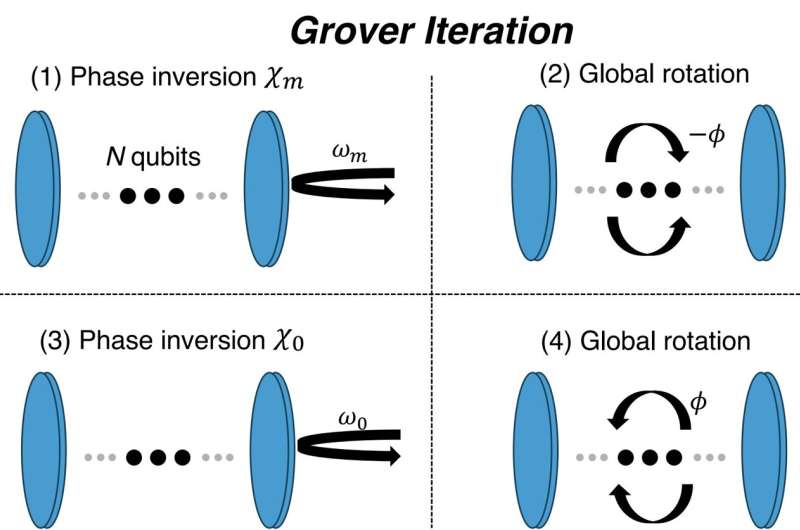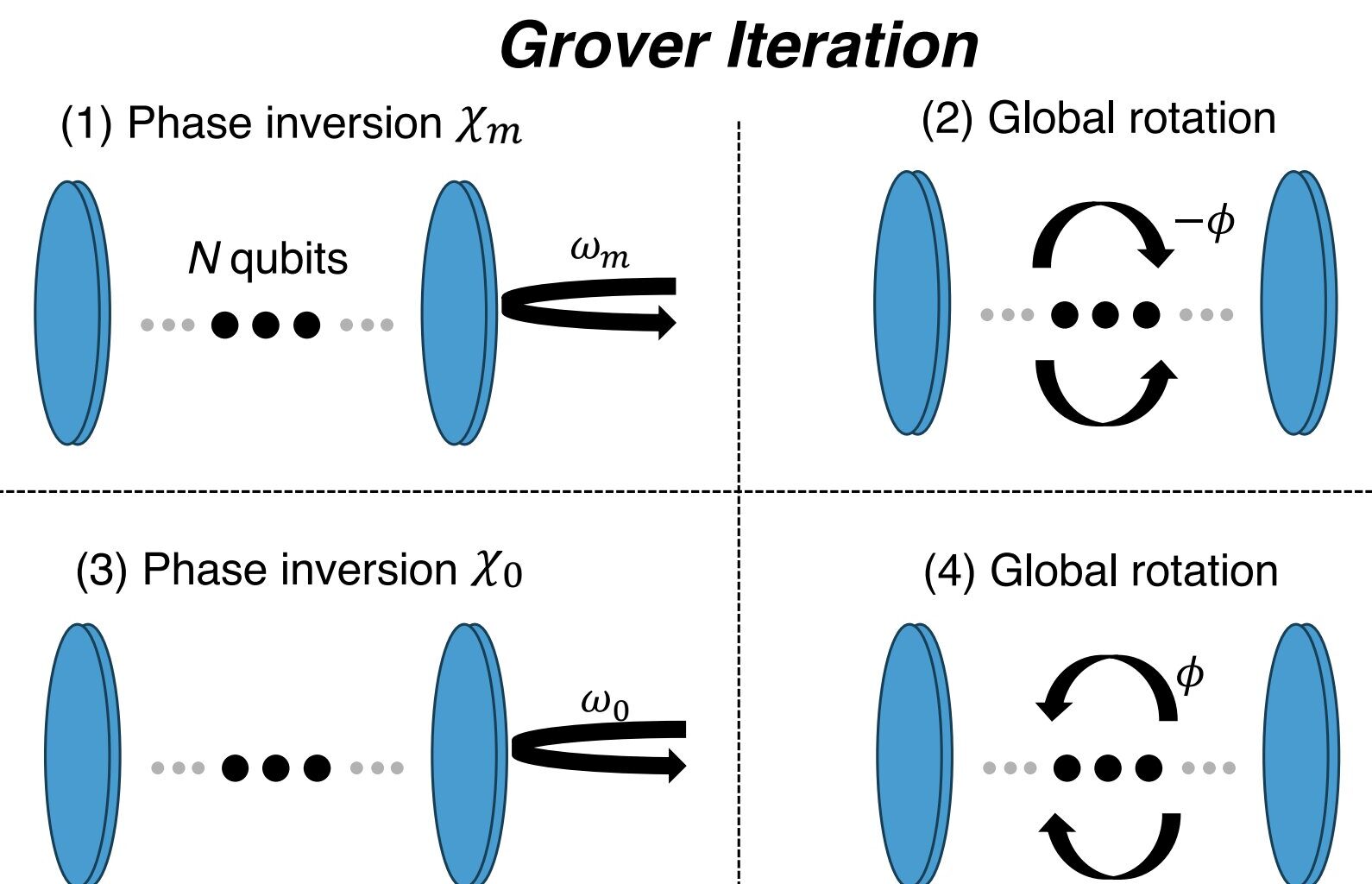
Grover’s algorithm, a quantum algorithm for search, can be used to prepare entangled states of many qubits efficiently. It can be physically implemented in atom-cavity systems by repeatedly hitting the cavity with single photons with a carefully chosen frequency. Credit: Figure adapted from O. Nagib, M. Saffman, and K. Mølmer, Efficient Preparation of Entangled States in Cavity QED with Grover’s Algorithm, Phys. Rev. Lett. 135, 050601 (2025).
The reliable engineering of quantum states, particularly those involving several particles, is central to the development of various quantum technologies, including quantum computers, sensors and communication systems. These collective quantum states include so-called Dicke and Greenberger-Horne-Zeilinger (GHZ) states, multipartite entangled states that can be leveraged to collect precise measurements, to correct errors made by quantum computers and to enable communication between remote devices leveraging quantum mechanical effects.
Researchers at the University of Wisconsin-Madison and the University of Copenhagen recently introduced a new strategy to efficiently prepare these entangled states in an optical cavity, a structure used to trap and amplify light. Their proposed approach, outlined in a paper published in Physical Review Letters, relies on the use of a quantum computing tool known as Grover’s search algorithm.
“Entangled states are an essential resource in quantum information, but their preparation has been limited because previous proposals either have low success probability or are too error prone,” Omar Nagib, first author of the paper, told Phys.org. “We propose an efficient scheme for preparing entangled states of many atoms inside a cavity.”
As part of their recent study, Nagib and his colleagues set out to explore the possibility of preparing entangled states using Grover’s search algorithm. This is a quantum computing algorithm developed by Lov Grover in 1996, which is designed to find a specific “marked” item in an unsorted database faster than classical computing algorithms.
“We showed that Grover’s algorithm, a quantum algorithm for unstructured search, can be adapted to quickly prepare a class of important entangled states called Dicke states, GHZ states, and Cat states,” explained Nagib. “While Grover’s algorithm is generally hard to implement, we showed that it can be efficiently realized in a cavity hosting an atomic ensemble by repeatedly reflecting single photons off the cavity.”
To demonstrate the potential of their proposed strategy, the researchers investigated its use in engineering different entangled states in a system comprised of atoms inside an optical cavity. Ultimately, they were able to theoretically show that various states can be realized, including Dicke states, GHZ states and Schrödinger cat states.
“Any Dicke state with 500 atoms or less can be prepared by hitting the cavity with at most eight single photons, making it a scalable approach,” said Nagib. “The proposed scheme is also general and realizable in other physical systems, such as superconducting qubits in a cavity, trapped ions and neutral (Rydberg) atoms.”
This recent work by Nagib and his colleagues could open new possibilities for the realization of quantum states and thus for the development of a wide range of carefully engineered quantum devices. In the future, it could inspire other research groups to adapt Grover’s search algorithm for the creation of desired quantum states in different systems, including systems made up of atoms, superconducting qubits and trapped ions.
“The present proposal requires cavities with small losses, which is experimentally challenging, and so it would be interesting to see if this requirement can be relaxed by modifying the scheme,” added Nagib. “It would also be interesting to determine whether the present work can be extended to efficiently prepare a larger class of entangled states.”
Written for you by our author Ingrid Fadelli, edited by Gaby Clark, and fact-checked and reviewed by Robert Egan—this article is the result of careful human work. We rely on readers like you to keep independent science journalism alive.
If this reporting matters to you,
please consider a donation (especially monthly).
You’ll get an ad-free account as a thank-you.
More information:
Omar Nagib et al, Efficient Preparation of Entangled States in Cavity QED with Grover’s Algorithm, Physical Review Letters (2025). DOI: 10.1103/3fzf-wsr2. On arXiv: DOI: 10.48550/arxiv.2501.18881
Omar Nagib et al, Deterministic carving of quantum states with Grover’s algorithm, Physical Review A (2025). DOI: 10.1103/s3vs-xz7w.
© 2025 Science X Network
Citation:
Using Grover’s algorithm to efficiently prepare collective quantum states in optical cavities (2025, August 15)
retrieved 16 August 2025
from https://phys.org/news/2025-08-grover-algorithm-efficiently-quantum-states.html
This document is subject to copyright. Apart from any fair dealing for the purpose of private study or research, no
part may be reproduced without the written permission. The content is provided for information purposes only.
